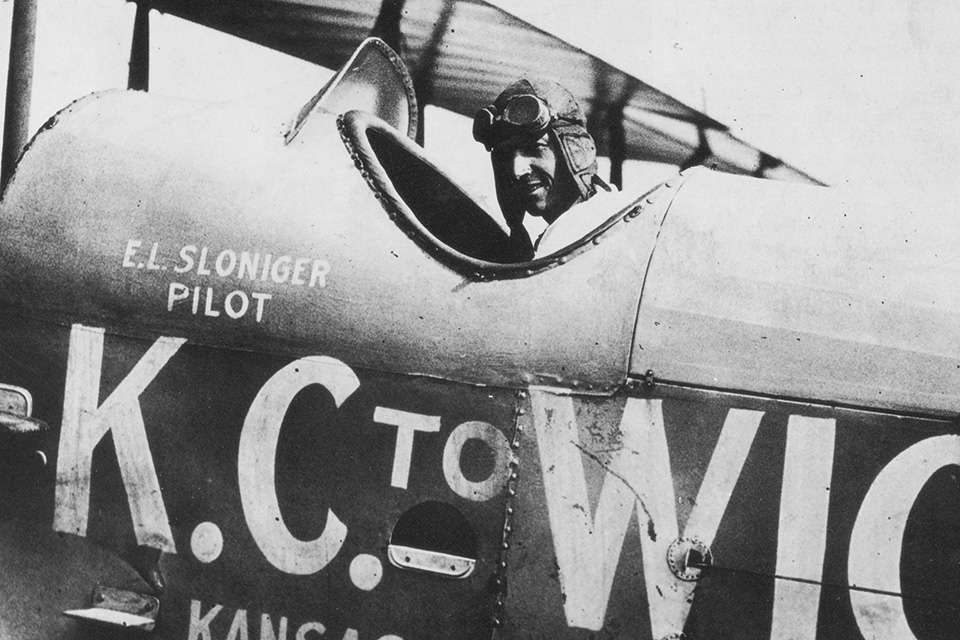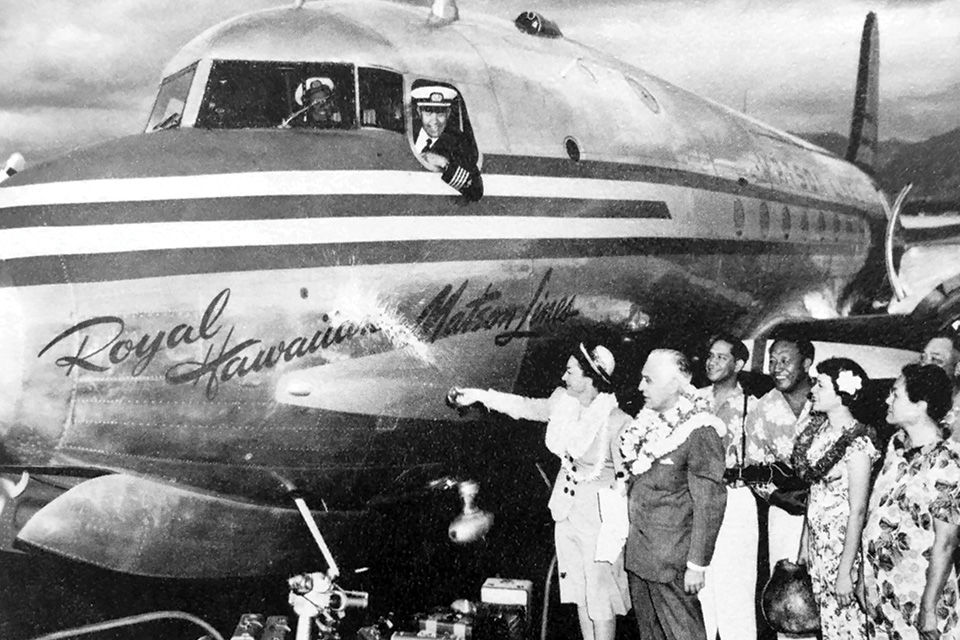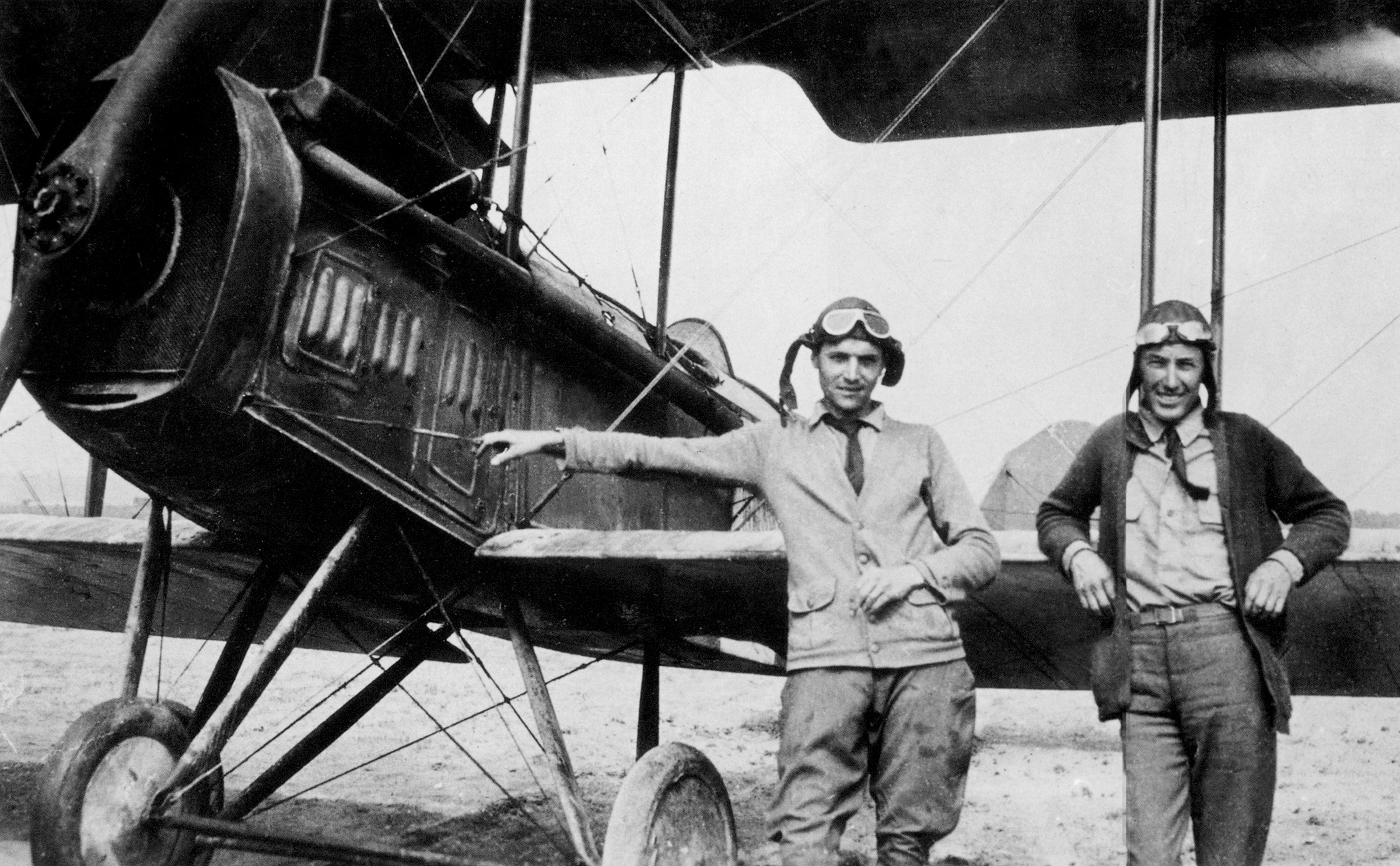Eyir Sloniger (later changed to Eyer)—“Sloniger of American Airlines”—was a genuine legend in his own time, a pilot’s pilot if ever there was one. Author Ernest K. Gann, who began his flying career at American, wrote about him as he did no other pilot.
“Sloniger,” Gann said, “had flown the mail mano-a-mano with Lindbergh and on my airline his seniority number was One. [He was] a master airman who had survived almost everything that can happen in the sky without a scratch on his carcass or smear on his natural nobility.” Gann went on to compare him to a riverboat gambler whose eyes absorbed all about him, he with his dark complexion, glossy black hair and deep, well-modulated voice. “I revered [him] as did nearly every other pilot of our line,” wrote Gann. Sloniger never sought publicity, never tried to single himself out, never bragged about his accomplishments. Which is likely why so few pilots remember him today.
“Slonnie,” as his friends called him, earned his U.S. Army Air Service wings at Kelly Field, Texas, in 1918 and was sent to France. The former Eagle Scout flew rotary-powered Nieuports along the Western Front in the closing days of World War I. Although he missed out on air combat, his thirst for adventure led him into dodging bandits while delivering mail and payrolls in Mexico. After returning to the States, Sloniger became a barnstormer—for several years a major headliner, air racer, test pilot and ultimately airline pilot. He was among the first pilots to make a scheduled passenger flight in the U.S. in the early 1920s.

Sloniger was born on July 28, 1896, in Nebraska’s Platte River Valley. He was raised in a large family with five brothers and three sisters. His was a healthy and well-adjusted upbringing, from a family whose only apparent eccentricity was a penchant for odd given names—his father was Commodore Perry (C.P.) Sloniger, with sisters Inez and Zazel and brother Urmson.
His first brush with national fame came following Charles Lindbergh’s May 1927 transatlantic flight, when the Dole Air Race from California to Hawaii was held in August. But for a quirk of fate, Slonnie’s career might have ended then and there. He lost a coin flip to Augie Pedlar to be the pilot on Miss Doran, one of eight aircraft that departed Oakland for Honolulu. Only two airplanes arrived, with 10 lives lost, including all three crew members on Miss Doran.
In 1928, the Robertson Aircraft Corporation of St. Louis organized a one-year anniversary mail run between St. Louis and Chicago to commemorate Lindbergh’s Paris flight. Slonnie, Lindbergh and Bud Gurney were among the half dozen pilots who participated.

In 1929 the footloose flier found himself in China representing North American Aviation trying to plant its foot in that virgin market. The venture was frustratingly unsuccessful, as were most such efforts in the highly corrupt Chiang Kai-shek Nationalist Kuomintang government. A downcast Slonnie returned to America in 1930, where his professional prospects suddenly brightened. A new airline, American Airways, had been created by a union of scores of tiny air transport companies, anchored around Robertson and Colonial Air Transport. The highly regarded Sloniger was immediately brought on board.
Slonnie logged 1,800 flying hours in 1931, mostly hauling U.S. Mail. By 1932 AA was serving 60 cities with 100 airplanes. In 1934, however, the roof fell in when President Franklin D. Roosevelt nationalized mail delivery, giving it to the U.S. Army Air Corps. It very quickly became clear that the Army wasn’t up to the job—a dozen of its pilots crashed and many were killed. The scandal resulted in a reorganization of the airline industry. Slonnie’s line was reborn as American Airlines just as such sleek new low-wing monoplane airliners as the Boeing Model 247 and Douglas DC-2 and DC-3 began appearing. The modern passenger airline age had begun.
By the middle of 1934, Slonnie’s business card read “Chief Pilot, American Airlines,” his seniority number firmly established as Number One. The company now had 2,000 employees (a figure that would quadruple in another decade) and 423 airliners of all types and sizes. By 1935, Slonnie had about 11,000 flying hours.
World War II saw the formation of Air Transport Command, a quasi-military organization made up of airliners and their civilian crews and headed by newly commissioned Lt. Col. Cyrus R. Smith, American Airlines’ president. ATC provided the backbone of U.S. wartime air transport. Slonnie flew uncomplainingly alongside thousands of other airline pilots, taking his flying assignments in turn without regard to his status, though every crewman from every line knew who he was.
In postwar 1946, after AA had returned to commercial domestic flying, Slonnie stunned the flying world by giving up the most coveted seniority number of them all to join a new “can’t miss” international luxury airline called Matson Lines, owned by the famed passenger steamship line. Unfortunately, the line did miss (due in no small part to the political clout of Pan American Airways president Juan Trippe) and Slonnie was out in the airline cold, left with the prospect of either starting over as a lowly copilot on one of the established lines or striking out with the non-skeds as an itinerant captain. He chose the latter. For a number of years he eked out a living, but one final, incredibly exhausting marathon trip in 1955 from Puerto Rico to Chicago’s Midway airport ended it all. He walked into the office and declared, “I’ve decided to hang up my wings.” The consensus among his fellow pilots: “Slonnie quit while he was ahead.”
Sloniger’s proudest boast, one of his very few, was that “in nearly 25,000 hours and 38 years of flying I never scratched a single passenger.” His son wrote, “He died age seventy-three in 1969—in bed, as he had always intended to do.”
This feature appeared in the September 2021 issue of Aviation History. Don’t miss an issue subscribe!






